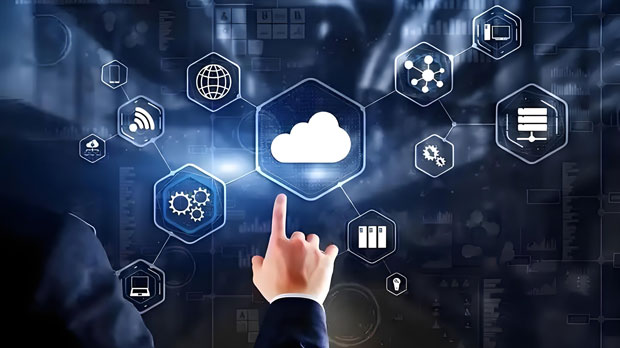Cross-border businesses, especially those engaging in e-commerce or international digital marketing, often face challenges in handling geo-restricted content, maintaining privacy, and ensuring stable connections for operations. One technology solution that has gained significant attention is the Static ISP Proxy. These proxies provide businesses with a reliable way to access location-specific data, circumvent geo-blocked content, and enhance their online security. This article explores why cross-border businesses tend to favor static ISP proxies and delves into their advantages in real-world applications. Introduction: The Growing Need for Proxies in Cross-Border Business OperationsIn today’s increasingly interconnected digital landscape, businesses looking to expand internationally are continually facing geographic restrictions, IP-based blocking, and privacy concerns. Proxies, particularly Static ISP proxies, have emerged as a valuable tool for businesses to overcome these obstacles. Static ISP proxies are associated with real Internet Service Provider (ISP) IPs, which provide businesses with a unique set of advantages that dynamic proxies cannot offer. This makes them an ideal solution for companies that need stable, reliable, and secure connections for cross-border operations.The Importance of Static ISP Proxies in Cross-Border BusinessStatic ISP proxies offer businesses a wide array of benefits, especially when it comes to international operations. These proxies use IP addresses that are assigned by ISPs, rather than data centers, which makes them appear more like regular user traffic. As such, Static ISP proxies have a major advantage in circumventing blocks on online content, avoiding detection by anti-bot measures, and establishing long-term connections.1. Overcoming Geo-Restrictions and Accessing Global MarketsOne of the most significant challenges for cross-border businesses is overcoming geo-restrictions. Websites and digital services often limit access based on a user’s geographic location. With Static ISP proxies, businesses can easily spoof their location by using IP addresses from specific countries. This enables them to access content, data, and services from multiple regions without encountering typical location-based restrictions. For example, an online retailer may want to check product availability in a particular country or region but could be blocked due to geo-restrictions. Static ISP proxies allow such businesses to bypass these limitations without risking their accounts being flagged or banned.2. Stability and Reliability for Long-Term ProjectsWhen running international marketing campaigns, monitoring competitors, or conducting data scraping, consistency and reliability are paramount. Static ISP proxies provide this stability, as they offer a fixed IP address over time, unlike rotating proxies that change frequently. This constant connection ensures that businesses can gather and analyze data without interruptions.For example, companies that run SEO campaigns targeting various global markets need to maintain a consistent identity for long periods. Switching IP addresses too frequently could disrupt the campaign’s success. Static ISP proxies help maintain a consistent online presence, making them ideal for long-term international projects.3. Avoiding IP Bans and CAPTCHAsMany websites employ security mechanisms like CAPTCHA challenges, IP-based blocking, or fingerprinting to prevent automated bots from scraping data or performing malicious actions. Static ISP proxies are more effective than traditional data center proxies at avoiding these security measures because they use legitimate IP addresses that come from trusted ISPs. For cross-border businesses, avoiding IP bans is crucial. If a company is continuously scraping data for market analysis or tracking online competitors, frequent changes in IP address could easily lead to blocks or CAPTCHA challenges, slowing down progress. Static ISP proxies help businesses maintain the same IP address, reducing the risk of detection and ensuring seamless operations.4. Enhanced Privacy and Security for Cross-Border TransactionsSecurity is a significant concern for businesses operating across borders. Handling sensitive data, whether it’s customer information, financial records, or proprietary business data, requires a secure environment. Static ISP proxies help mitigate risks associated with data breaches by masking the user's real IP address, ensuring that transactions and communications remain private.Additionally, businesses can leverage these proxies to hide their operations from competitors and malicious third parties. This enhanced layer of security is particularly important when conducting international transactions or research, where privacy is a legal and operational priority.5. Better Compatibility with Local ServicesIn certain regions, businesses may need access to local services such as payment gateways, local advertising platforms, or government websites. Static ISP proxies are a useful tool for accessing these services without triggering location-based restrictions or service refusals. By using proxies from the specific ISP in the target region, businesses can ensure that their traffic is recognized as coming from a legitimate local user.For example, when a cross-border business wants to advertise in a specific region, it may need to make sure that its IP address matches the local standards. Static ISP proxies give businesses the ability to use local IPs for a seamless and compliant experience when using regional services.6. Cost-Effective Solution for Growing BusinessesCross-border businesses, especially small-to-medium-sized enterprises (SMEs), are always looking for cost-effective solutions to optimize their operations. While some may choose to use dynamic proxies or VPNs, Static ISP proxies offer a more affordable and efficient solution in the long term. Since Static ISP proxies are often associated with lower risk and higher stability, businesses can use them for multiple purposes, such as accessing region-specific data, managing multiple accounts, and running international campaigns without the need for additional infrastructure. This makes them a great choice for businesses with budget constraints that still need the reliability and security of a high-quality proxy service.Conclusion: The Growing Relevance of Static ISP Proxies in Cross-Border BusinessIn conclusion, Static ISP proxies offer numerous advantages to cross-border businesses. They enable companies to overcome geo-restrictions, maintain stable and reliable connections, avoid security challenges, and access local services seamlessly. Additionally, they are cost-effective for growing businesses that need to operate in diverse global markets. Given the increasing importance of international expansion, these proxies have become an indispensable tool for businesses looking to thrive in the competitive global landscape.By integrating Static ISP proxies into their digital strategies, businesses can improve their online operations, enhance security, and ensure a consistent and effective presence in international markets. This makes them an invaluable asset in the toolkit of any cross-border business seeking to navigate the complexities of the global digital economy.
Nov 11, 2025



































































